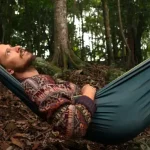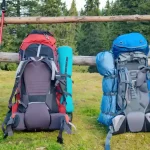
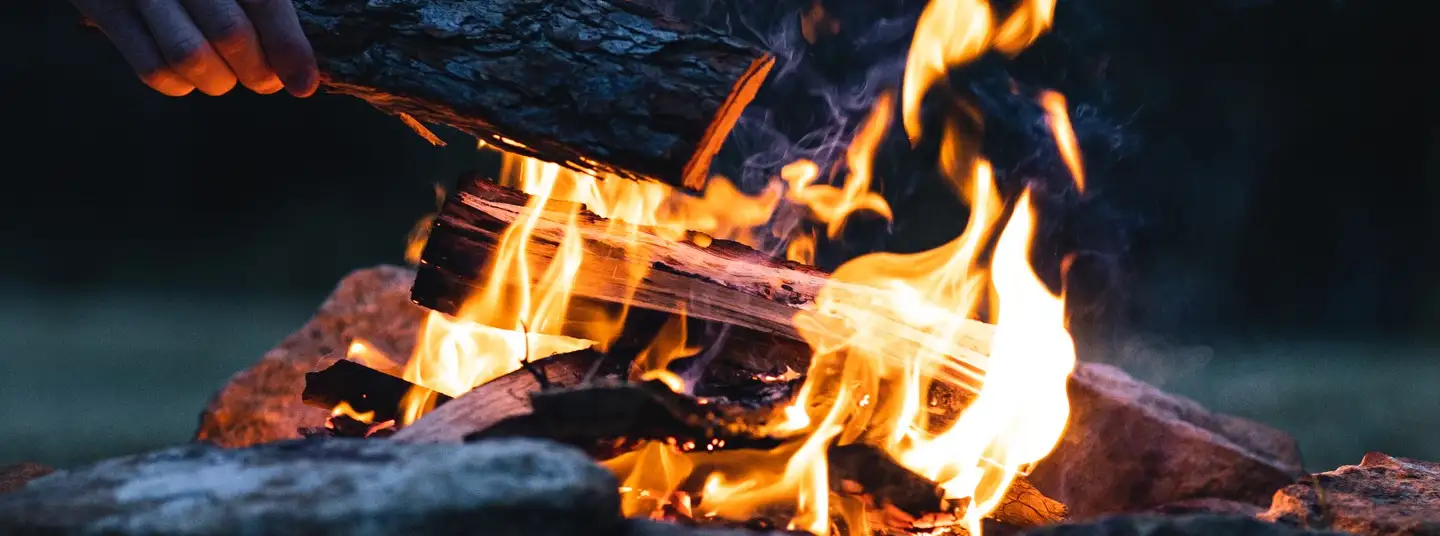
“Building the Perfect Campfire: Techniques and Tips” guides you through every step of crafting a campfire, from selecting the best materials to mastering various techniques like teepee and log cabin styles. It stresses the importance of using the right kind of firewood, igniting fires efficiently, and following safety measures to ensure a safe and enjoyable experience. This piece is designed to enhance your camping trips by providing essential knowledge for fire building, maintenance, and cooking, ensuring your adventures are both memorable and safe.
There’s something undeniably enchanting about a campfire crackling under the starry night sky—a warm, flickering oasis in the wilderness. A campfire isn’t just a source of heat and light; it’s a gathering point for stories, camaraderie, and the heart of any camping trip. Yet, building the perfect campfire isn’t merely a matter of tossing some logs together and striking a match. It’s an art and a science, requiring technique, knowledge, and a touch of creativity. In this guide, we’ll explore the intricacies of building the perfect campfire, from different fire-building methods to tips for keeping the flames alive in cooler weather.
The Basic Campfire Components
Before we delve into the specifics of fire-building, it’s essential to understand the fundamental components of a campfire. A well-constructed campfire consists of three key elements:
- Fuel: This is the wood that burns in the fire. It’s typically categorized into three sizes: tinder, kindling, and fuelwood. Tinder is fine, dry material that catches fire easily, such as dry leaves, bark, or paper. Kindling consists of small sticks or twigs, while fuelwood is larger logs or branches.
- Oxygen: Adequate airflow is crucial for combustion. A fire needs a constant supply of oxygen to burn efficiently.
- Heat: Heat is the ignition source that initially ignites the tinder and kindling. It can come from various methods, including matches, lighters, flint and steel, or even friction fire techniques.
Proper preparation and arrangement of these components are vital for building a successful campfire.
Fire-Building Methods
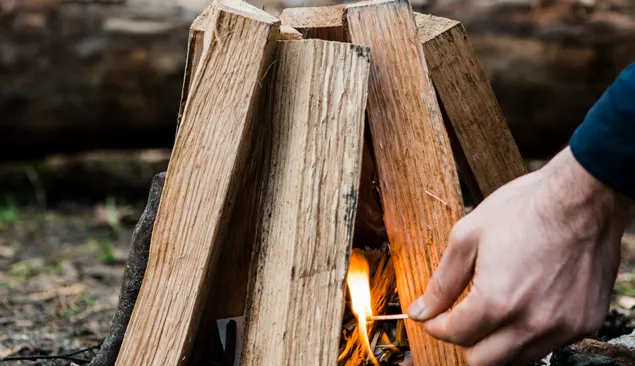
Campfires come in various shapes and sizes, depending on the method you choose. Each method has its advantages and is suited to different scenarios. Here are some common fire-building methods:
1. Teepee Fire
The teepee fire is one of the simplest and most traditional methods. It involves arranging kindling and fuelwood in a conical shape resembling a teepee. Place tinder at the center to ignite first, and as it burns, it ignites the surrounding kindling.
Advantages:
- Quick and easy to set up.
- Provides excellent airflow for a strong flame.
Best Use Cases:
- Ideal for cooking or providing warmth in open areas.
2. Log Cabin Fire
In the log cabin fire, you create a square or rectangular structure using alternating layers of fuelwood. Inside the cabin, place the tinder and kindling. As the fire burns, it consumes the inner layers of wood.
Advantages:
- Creates a stable and long-lasting fire.
- Suitable for cooking on a grill or grate placed above.
Best Use Cases:
- Perfect for extended campfire evenings or campfire cooking.
3. Dakota Fire Hole
The Dakota fire hole is a method suitable for windy conditions. It involves digging a hole in the ground and connecting it to a smaller hole for ventilation. Fuelwood is added horizontally over the hole.
Advantages:
- Efficient in windy conditions due to the dug-in design.
- Produces less smoke and is discreet.
Best Use Cases:
- Ideal for situations where wind poses a challenge.
4. Lean-To Fire
The lean-to fire involves placing a long piece of kindling at a slight angle against a larger log or rock. The tinder is placed at the base of the kindling. As the fire burns, it ignites the kindling, which eventually falls onto the fuelwood.
Advantages:
- Suitable for windy conditions when sheltered from the wind.
- Provides a stable flame for cooking or warmth.
Best Use Cases:
- Useful when you have limited fire-starting materials.
These fire-building methods offer versatility for various camping scenarios, so choose the one that best suits your needs and conditions.
Choosing the Right Firewood
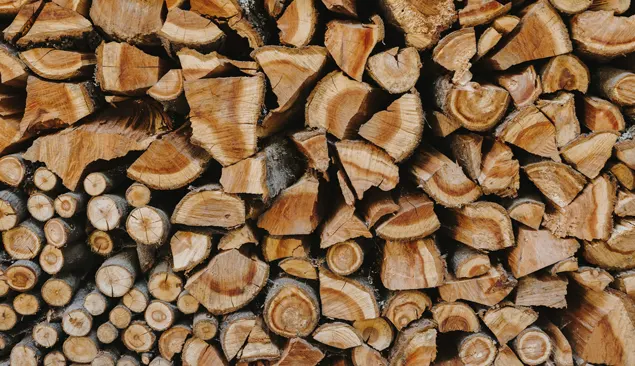
Selecting the right type of firewood is crucial for a successful campfire. The choice of wood affects the fire’s burn time, heat output, and the amount of smoke produced. Here’s a brief overview of firewood types:
- Hardwoods: Hardwoods like oak, maple, and hickory burn longer and produce more heat. They are excellent choices for a long-lasting campfire.
- Softwoods: Softwoods such as pine, cedar, and spruce ignite quickly but burn faster and produce more smoke. They are suitable for kindling but may not provide sustained heat.
- Seasoned Wood: Dry, seasoned wood with low moisture content burns more efficiently and produces less smoke. It’s ideal for a clean-burning fire.
- Green Wood: Green or freshly cut wood has high moisture content and can be challenging to ignite. It produces excessive smoke and may smolder rather than burn.
To ensure you have an ample supply of firewood, consider the following:
Sourcing Firewood
- Local Regulations: Check local regulations regarding the collection of firewood. Some areas may require permits or prohibit the gathering of wood from the forest floor.
- Purchase: Buy firewood from local vendors or campsite stores to support local businesses and prevent the spread of invasive pests.
- Dead and Fallen Wood: Use dead and fallen branches and logs when possible to minimize the impact on living trees.
Storing Firewood
- Keep It Dry: Store firewood in a dry, covered area to prevent moisture absorption, which can make it difficult to ignite.
- Elevate: Stack firewood off the ground on a platform or pallet to ensure air circulation and discourage pests.
- Rotate Stock: Use the oldest firewood first to maintain a steady supply of seasoned wood.
Properly sourced and stored firewood is the foundation of a successful campfire.
Fire Ignition Techniques
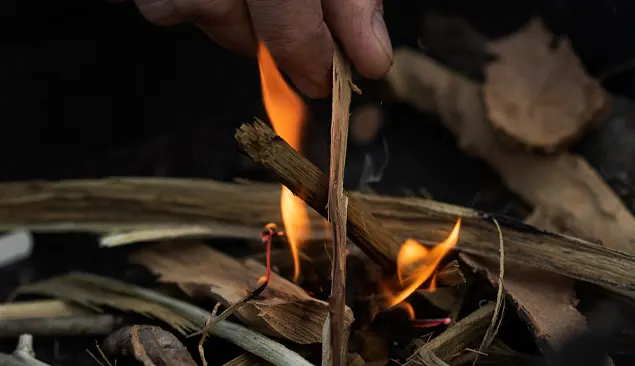
Igniting a campfire can be achieved through various methods. While matches and lighters are common and convenient, it’s essential to be prepared for alternative ignition techniques, especially in remote wilderness settings:
- Matches: Waterproof matches are a reliable choice. Store them in a waterproof container.
- Lighters: Windproof lighters with refillable fuel are dependable for campfires.
- Fire Starters: Commercial fire starters are compact and designed to ignite even in wet conditions.
- Flint and Steel: Traditional flint and steel sets create sparks when struck, igniting tinder.
- Friction Fire: Advanced campers can practice friction fire techniques like bow drills or hand drills. These methods require skill and practice.
It’s wise to carry multiple fire-starting tools in case of emergencies, ensuring you can light a fire even in challenging conditions.
Fire Safety and Regulations
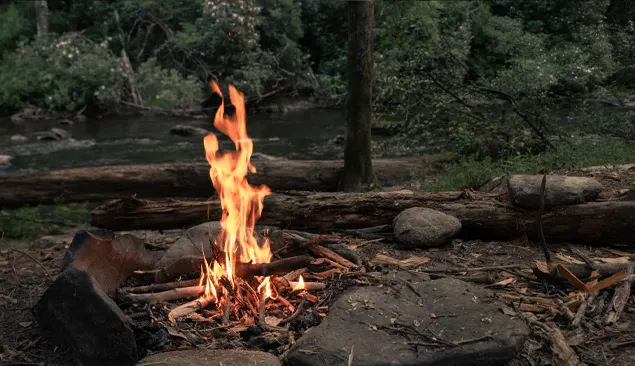
Before igniting a campfire, it’s essential to familiarize yourself with local fire regulations and safety guidelines:
- Check for Bans: Research if there are any fire bans or restrictions in your camping area. Drought, high fire danger, or specific regulations may prohibit campfires.
- Obtain Permits: Some areas require permits for campfires. Make sure to obtain the necessary permits if required.
- Select Safe Locations: Choose a safe and designated campfire site away from overhanging branches, tents, and other flammable objects.
- Clear the Area: Remove leaves, pine needles, and other flammable debris from the fire area.
- Water and Tools: Keep a bucket of water, a shovel, and a fire extinguisher nearby for emergencies.
- Never Leave Unattended: Never leave a campfire unattended, and ensure it is fully extinguished before leaving the site.
Responsible campfire practices are not only for your safety but also for preserving the natural beauty of the wilderness.
Keeping the Fire Going in Cooler Weather
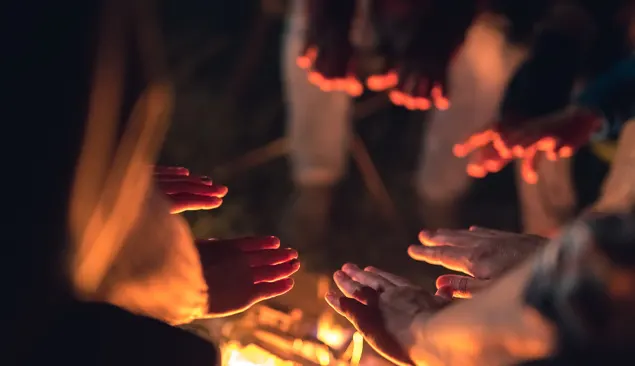
One of the challenges campers face is maintaining a campfire in cooler weather. Here are some tips to help you keep the flames alive when the temperature drops:
- Gather Extra Firewood: In cold weather, you’ll need more firewood to sustain the fire. Ensure you have a sufficient supply within reach.
- Use Dry Firewood: Wet or green firewood can be challenging to ignite and keep burning. Use dry, seasoned wood for a more efficient fire.
- Create a Windbreak: Erect a windbreak or natural barrier to protect the fire from gusts of wind that can extinguish the flames.
- Build a Reflective Wall: Construct a wall or barrier behind the fire to reflect heat back towards the campsite, providing additional warmth.
- Feed the Fire Gradually: Add kindling and small pieces of wood gradually to maintain a steady flame. Avoid smothering the fire with too much wood at once.
- Stay Warm: Keep yourself warm with appropriate clothing and gear. The more comfortable you are, the longer you’ll be willing to tend to the fire.
- Use Fire-Resistant Gloves: Fire-resistant gloves allow you to handle hot pots, pans, or adjust the fire without risk of burns.
- Insulate the Ground: Place a layer of rocks or bricks beneath the fire to insulate it from the cold ground, helping it burn more efficiently.
Remember that safety is paramount, especially when dealing with fire in cooler conditions. Exercise caution and be prepared for any temperature fluctuations.
Building a Fire for Cooking
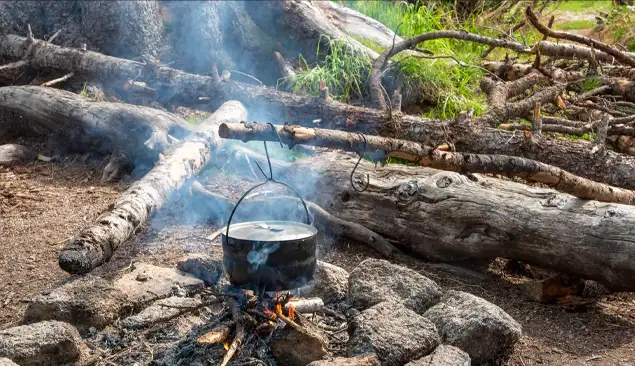
If your campfire serves as a cooking source, consider the following tips:
- Use a Grill Grate: Placing a grill grate over the campfire allows you to cook directly over the flames. It’s ideal for grilling meats, vegetables, and even kebabs.
- Adjust Heat Levels: Learn to control the heat by adjusting the distance between the food and the flames. Higher flames provide more heat, while lower flames offer gentler cooking.
- Cookware: Use cast iron cookware, Dutch ovens, or specialized campfire cooking equipment to prepare a wide range of meals, from stews to baked goods.
- Safety First: Always exercise caution when cooking over an open flame. Use long-handled utensils and fire-resistant gloves to prevent burns.
- Fire-Starting Techniques: When cooking, choose a fire-starting technique that provides a stable and even flame to ensure consistent cooking temperatures.
Campfire Etiquette and Leave No Trace Principles
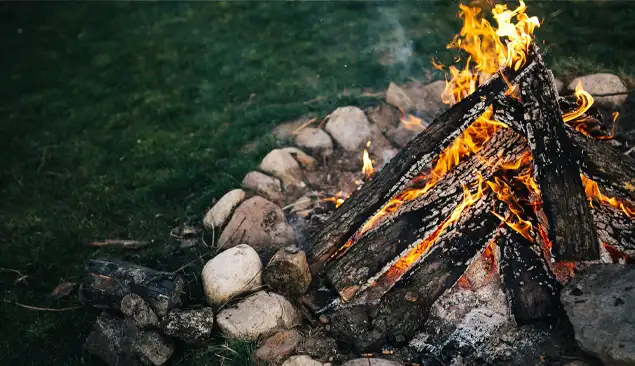
As responsible campers, it’s our duty to minimize our impact on the environment and practice good campfire etiquette:
- Follow Leave No Trace Principles: Adhere to Leave No Trace principles, which emphasize leaving the wilderness as you found it. This includes packing out all trash and ensuring your campfire site is clean.
- Use Established Fire Rings: Whenever possible, use established fire rings or fire pans to minimize the disturbance to the natural surroundings.
- Limit the Size: Keep your campfire small and manageable. A raging bonfire is unnecessary and can damage the environment.
- Respect Quiet Hours: Be mindful of campground quiet hours. Keep noise levels low, especially around the campfire, to avoid disturbing fellow campers.
- Extinguish Completely: Before leaving your campsite or going to bed, make sure the fire is completely extinguished. Stir the ashes and pour water over them to ensure no hot embers remain.
Troubleshooting and Reviving a Dying Fire
Even with the best intentions, a campfire can sometimes struggle to stay alive. Here are some troubleshooting tips for reviving a dying fire:
- Add More Fuel: If the fire is dwindling, add additional kindling and fuelwood to rekindle the flames.
- Adjust Airflow: Check if the fire is getting enough oxygen. If not, gently blow on the embers to increase airflow.
- Stir the Ashes: Embers buried beneath ash can often be revived. Stir the ashes to expose the hot embers to oxygen.
- Use Fire Starters: If you have fire starters, use them to reignite the fire without disturbing the existing embers.
- Maintain a Flame: Once the fire is revived, maintain a steady flame by adding fuelwood gradually.
- Avoid Overloading: Be cautious not to overload the fire with too much wood at once, which can smother the flames.
Remember that practice makes perfect, and building and tending to a campfire is a skill that improves with experience.
Conclusion
The art of building the perfect campfire is a valuable skill for any outdoor enthusiast. It’s not just about warmth and sustenance; it’s about creating a focal point for gatherings, sharing stories, and connecting with nature. Whether you’re camping in the summer, fall, or winter, the ability to build a campfire is an essential part of the outdoor experience.
As you embark on your camping adventures, remember to respect the environment, follow fire regulations, and practice responsible campfire etiquette. With the right knowledge and techniques, you can create the perfect campfire—a source of warmth, light, and cherished memories under the vast canopy of the wilderness.
Author

Tom Miller
Tom is a seasoned camper and outdoor adventurer, with decades of experience exploring the wilderness. He's a retired park warden and has spent his life studying the flora and fauna of the natural world. Tom is a skilled outdoorsman, with a particular interest in backcountry camping, mountaineering, and wilderness survival. He's also an accomplished writer and has published several books on outdoor recreation.
Recent Posts

